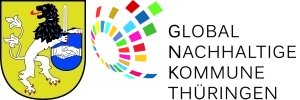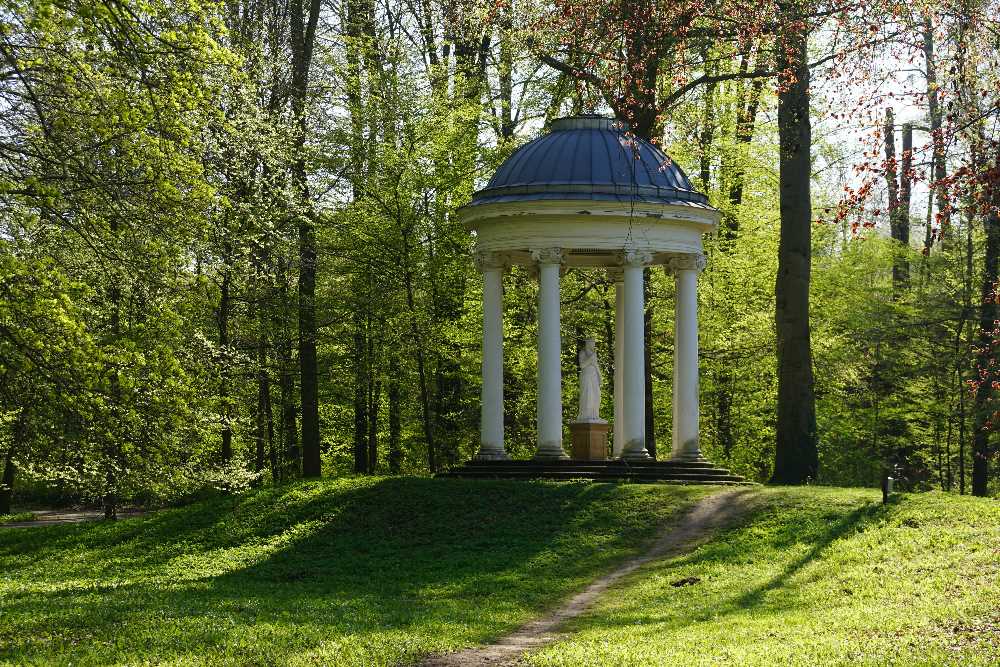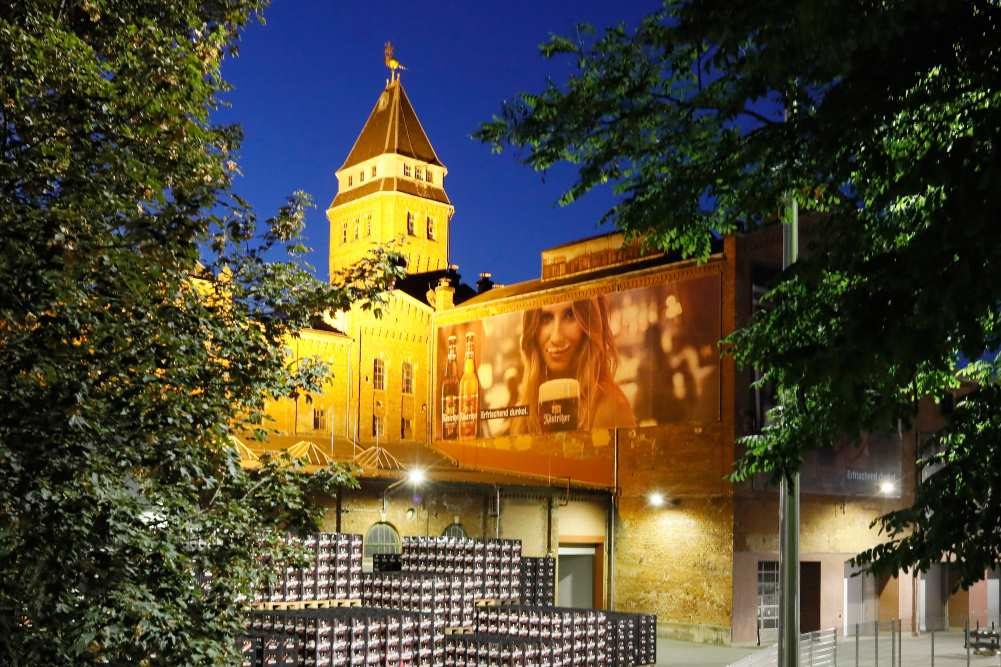Town of Bad Köstritz
The idyllic small Thuringian town of Bad Köstritz is situated along the middle course of the river ‘Weisse Elster‘. Numerous tumulus on the hills around the town prove that this area was settled by humans as early as in the New Stone Age. But a written mention of the town, the name of which can be traced back to a Slavic foundation about between the 8th and 10th centuries, is recorded only from the 14th century. Besides 49 other settlements of the Langenberg castellany, the town was first mentioned as ‘Kostricz‘ in a letter of lien dating to May 23, 1364. The privilege of brewing was granted to the lords of the Wolframsdorf manor in the year of 1543, a date which is recorded as foundation year of the Köstritz art of brewing. The Electoral Saxonian court conductor Heinrich Schütz is regarded as the most famous son of the town. He was born on Octobre 8th, 1585, in the ‘Obere Schenke‘ (upper inn) which today is a museum called Heinrich-Schütz-Haus. He was the first important German composer before J.S. Bach and worked for more than 57 years at the Saxonian court in Dresden. The regents of Reuss/Schleiz first gained foot in Köstritz in 1675 when buying the lower Köstritz manor. A paragium called Reuss/Schleiz-Köstritz was established for the descending collateral line which strongly influenced the town’s development until 1945. Today, the brewery founded in 1696 as black beer brewery and the landscaped park planted about 1800 according to English standards under Prince Henry XLIII Reuss Younger Line are still important characterizing features which attract visitors to the town as touristic destinations on the entrance to the ‘Reussischen Fürstenstrasse‘ (Reuss‘ Prince route). Köstritz became known as town of the flowers by the activities of the commercial gardeners Deegen, Sieckmann, Herger and Schade. These names stand for important breeding successes in dahlias, standard roses and multicolored foliage plants which were in demand all over Europe. Today, dahlias from Bad Köstritz are still very successful and recognised at great flower shows. From 1886 to 1945 Prof. Dr. Settegast‘s ‚Higher School of Horticulture‘ was an internationally renowned educational institution and Thuringia’s most important academy for gardeners and horticultural technicians.
The discovery of a rich salt spring and the establishment of the salt mine ‚Heinrichshall‘ in 1831 and of the chemical plant in 1845 resulted in an extensive industrial production. Even though the salt mine had to close in 1909 due to exhaustion of reserves, today the chemical plant is a ‘GmbH‘ (limited liability company) and still manufacturing special chemical products. The exploitation of brine from ‘Heinrichshall‘ also laid the basis for the health and spa system in Köstritz initiated by Dr. A. Sturm in 1845. In 1865 a spa center with brine and other therapeutic baths as well as hot sand baths was established which helped uncounted patients to relieve or even cure their complaints of the rheumatic sphere until 1990. The spa center was the reason for the town being called Bad Köstritz (Spa Köstritz), officially recognised in 1926. In 1927, the town was chartered. The regulation of the river ‚Weisse Elster‘ in 1933/35 resulted in deep incisions into the meadow around the town, the impacts of which have not yet healed completely. In 1953, a new bridge was inaugurated which was built in the course of the construction of a new road through the park. It replaced the old parabolic steel grid bridge which did not meet the increased traffic requirements any more after being blown up in April 1945 and being provisionally reconditioned. After reunfication of the two German states, there have been once more substantial changes to the landscape. A new industrial park called ‚Elsteraue‘ (Elster meadow) was established in the river valley along the A-road B 7 and another industrial park is developing at the location of the chemical plant on industrial wasteland of the old plant. The new residential area ‚Rosenhügel‘ (rose hill) was built on the Western hill of the Elster valley behind the area called ‚Gebind‘ and another residential area called ‘Birkenhain‘ (birch grove) was built at the end of Köstritz in direction to Caaschwitz. Due to reconstruction and restoration of many old houses and due to building of nice and bright new houses in the townscape, the monotone grey is more and more disappearing from the town. A care facility for elderly people is built on the grounds of the former spa center. The annual folk festivals such as the ‘Maibaumsetzen‘ (rising of the Maypole) in the district of Pohlitz and the dahlia festival in the city center attract visitors from near and far. Recently, the Köstritz Brewery Festival increased its attractiveness by holding cycling events and the ‚Werfertag‘ (thrower day) by inviting world champions and Olympic champions.















